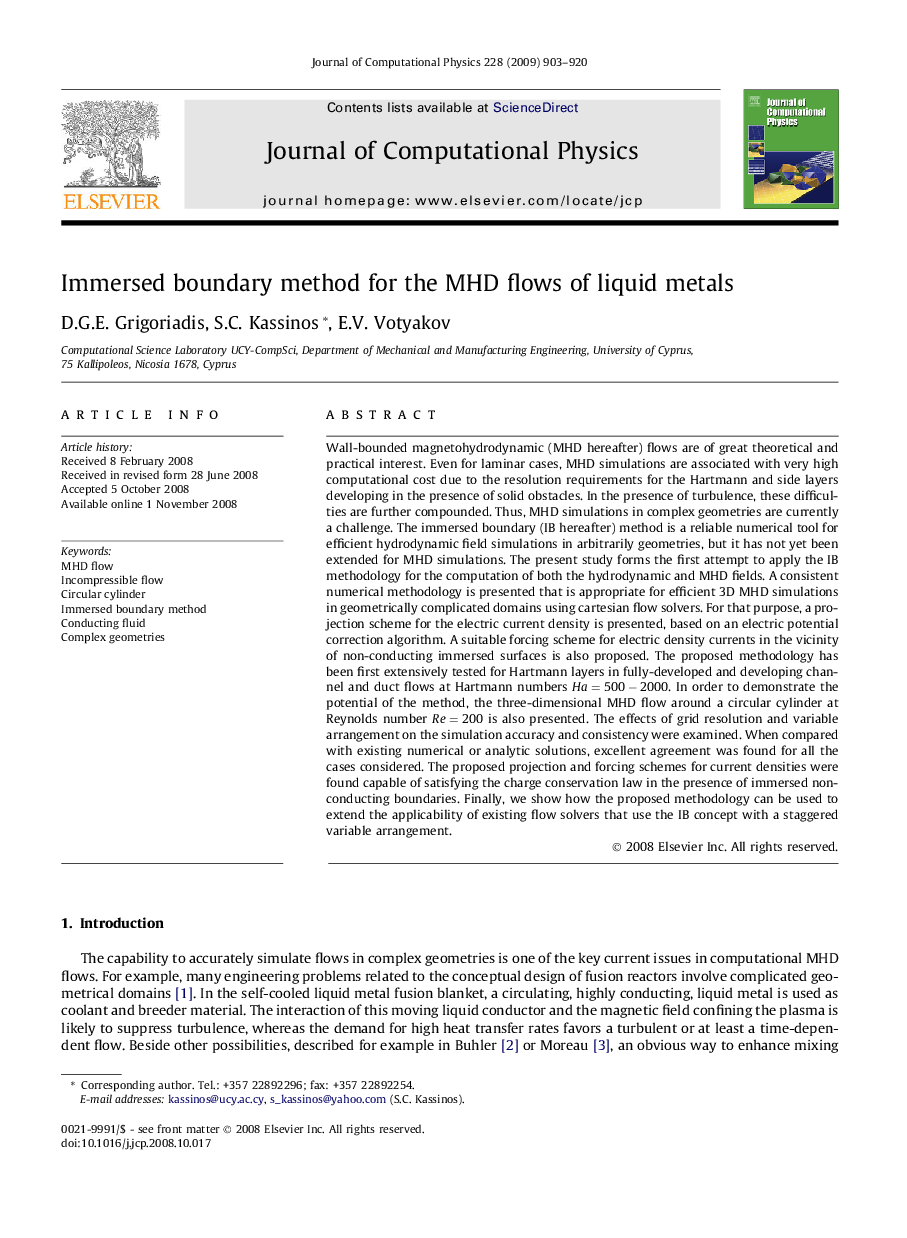| کد مقاله | کد نشریه | سال انتشار | مقاله انگلیسی | نسخه تمام متن |
|---|---|---|---|---|
| 520263 | 867705 | 2009 | 18 صفحه PDF | دانلود رایگان |

Wall-bounded magnetohydrodynamic (MHD hereafter) flows are of great theoretical and practical interest. Even for laminar cases, MHD simulations are associated with very high computational cost due to the resolution requirements for the Hartmann and side layers developing in the presence of solid obstacles. In the presence of turbulence, these difficulties are further compounded. Thus, MHD simulations in complex geometries are currently a challenge. The immersed boundary (IB hereafter) method is a reliable numerical tool for efficient hydrodynamic field simulations in arbitrarily geometries, but it has not yet been extended for MHD simulations. The present study forms the first attempt to apply the IB methodology for the computation of both the hydrodynamic and MHD fields. A consistent numerical methodology is presented that is appropriate for efficient 3D MHD simulations in geometrically complicated domains using cartesian flow solvers. For that purpose, a projection scheme for the electric current density is presented, based on an electric potential correction algorithm. A suitable forcing scheme for electric density currents in the vicinity of non-conducting immersed surfaces is also proposed. The proposed methodology has been first extensively tested for Hartmann layers in fully-developed and developing channel and duct flows at Hartmann numbers Ha=500-2000Ha=500-2000. In order to demonstrate the potential of the method, the three-dimensional MHD flow around a circular cylinder at Reynolds number Re=200Re=200 is also presented. The effects of grid resolution and variable arrangement on the simulation accuracy and consistency were examined. When compared with existing numerical or analytic solutions, excellent agreement was found for all the cases considered. The proposed projection and forcing schemes for current densities were found capable of satisfying the charge conservation law in the presence of immersed non-conducting boundaries. Finally, we show how the proposed methodology can be used to extend the applicability of existing flow solvers that use the IB concept with a staggered variable arrangement.
Journal: Journal of Computational Physics - Volume 228, Issue 3, 20 February 2009, Pages 903–920